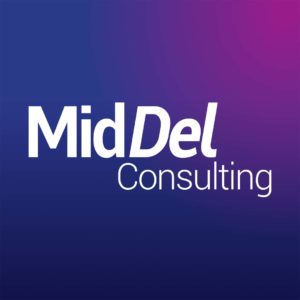
Issue
Our client, a retail electric provider, engaged MidDel Consulting to determine best course of action to improve reporting efficiency and operational business intelligence. MidDel was tasked to identify and build improved data integrations and reporting processes for use by key business areas. After review of current reporting and multiple process reviews, MidDel proposed a high-level architecture to integrate the multiple divergent data sources into a single view of the truth. A key component of the architecture was to include proofing, data exceptions and tie outs based upon feedback from current Systems of Record, thus building reliability into the overall design.
Solution
MidDel provided an overall design of the dataflow, database architecture for reporting data and built the data integrations to consolidate the client’s data. MidDel also provided design specifications and proposed the solution to reside in the Microsoft Azure cloud. A database instance and virtual server were built out to handle all data storage needs and integration services. Use of Microsoft Azure allowed for future growth and improved reliability with the ease of use of Microsoft platform and Active Directory services. Realtime access to the Azure database and server were handled via site-to-site VPN connection with no external public facing interfaces allowed for security purposes.
MidDel reviewed and determined the best sources to use for the Operational Data Store to ensure accurate and reliable reporting. Several key sources of data were identified to integrate, ranging from raw EDI data files to Oracle databases. Data sources, which were only available via system generated reports from the Billing system of record, were also setup to be exported and imported daily. The target goal MidDel proposed was to get to a clean and reliable view of the system data. The Operational Data Store was established, confirmed operational and configured to be updated daily. Once regular data refreshes were established, MidDel then followed through with the creation of reporting solutions to be used by key business areas. Exception reporting and error handling were built into the daily process to notify system administrators of any failures during the daily data migrations. Completion of the Operational Data Store allowed for creation of several key reporting needs and benefits as stated below.
EC Infosystems Gaps Filled:
The Operational Data Store solution provided several key benefits:
New and Improved Report Targets:
These recommended solutions provided scalable systems with small delivery risk, as work was completed in small phases. Each phase of work resulted in the client seeing improved results and benefits. The advantages of reporting improvements were proven with each deployment iteration. Many reporting requests were completed quickly or accurately, given the foundation provided via the Operational Data Store. The solution provides the client with the means to increase productivity, work on more important tasks, and reduce manual report creation activities, while also providing system scalability and minimizing the need for additional staff.
Result
The client utilized the solution provided and received several key benefits including streamlined reporting, reliable and accurate report generation, and as a result of the consolidated reporting, allowed the focus of the business to return to improving business operations and improving the overall system data integrity and cleanliness.
The estimated benefits to the organization are: